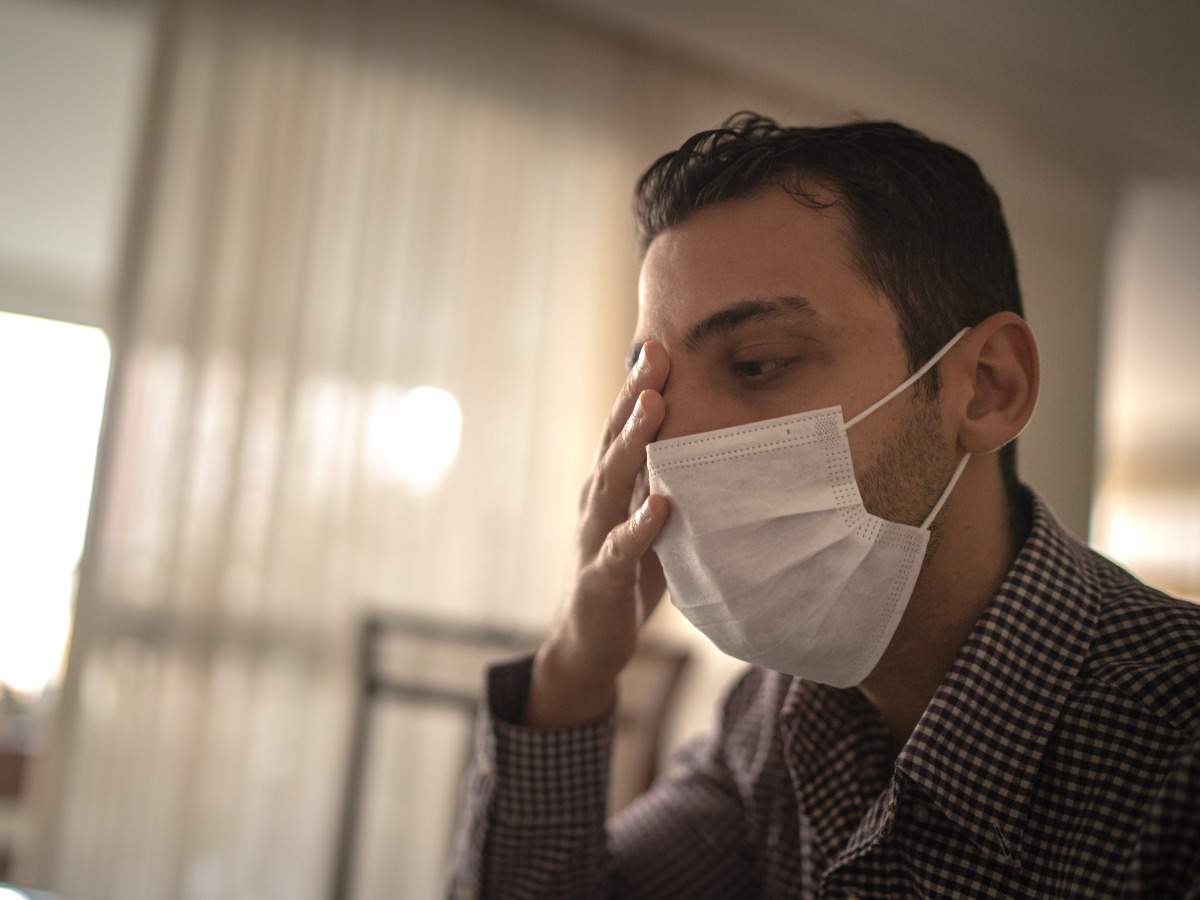The second wave of coronavirus in India, which has been adding caseloads every passing day is super deadly. From newer strains to added severity, the spike in cases has also been largely seen amongst the healthier age groups, the ones between 25-40 years old.
readmore
02/9Younger people are landing in hospitals
While this age group hasn’t been prioritized for vaccination yet, authorities also suggest that the lack of COVID-19 appropriate behaviour is likely a factor responsible for impacting the young and healthy right now, who are also landing up in hospitals and getting impacted.
readmore
03/9Second wave is causing newer, unusual symptoms apart from a fever
According to doctors, more and more people testing positive for the virus are also at the risk of showcasing vague, unusual symptoms, which were previously not reported in the first wave of coronavirus.
While fever may not always be a tell-tale sign of contracting the infection, these are the typical symptoms being observed amongst younger people right now and need attention at once:
readmore
04/9Dry mouth
Dry mouth is characterised to be an oral symptom associated with COVID-19, and also common with a lot of other viral infections.
A dry mouth can disrupt the production of saliva in the mouth and further facilitate the spread of pathogens, including SARS-COV-2. While there’s no clinical evidence as to how COVID-19 could fuel this early symptom, doctors right now believe that dry mouth syndrome or Xerostomia happens when the virus attacks muscle linings and oral tissues present inside the mouth. It could also strike before other symptoms, such as fever or a cough.
Additionally, Xerostomia can make you feel a sense of dryness or stickiness in the mouth and further, make the saliva a little thicker. You could also experience bad breath.
It could also be accompanied by other oral symptoms such as blisters, changes in the colour and texture of the tongue, difficulty eating. To know more about these symptoms, read the story here.
readmore
05/9Gastrointestinal issues
In the absence of a cough and fever, gastrointestinal issues are the newest common symptom seen in people testing positive for coronavirus right now.
While gastrointestinal infection signs, accompanied by typical COVID-19 signs are a marker for severe COVID, in many cases, COVID-19 signs may only show up in the gut and cause abdominal distress. A lot of it may have to do with the gut’s connection with the immune system may have a role to play. The gut microbiome has a lot of defensive actions, which fight out viruses, fungi, bacteria and also help active immune response. Hence, any disturbance in the gut microbiome can have consequences for your health.
Symptoms like unusual abdominal cramps, persistent pain, difficulty in digestion, appetite loss could be early signs that demand testing right now. Do not ignore them.
readmore
06/9Nausea
As per current research, 53% of patients with COVID-19 go on to develop at least one gastrointestinal symptom during the course of their illness, with nausea and vomiting being the most common ones being recorded by younger patients in India.
Nausea, a presentation of gastrointestinal infection can occur chronically through the infection, or sometimes resolve on its own. While this isn’t an uncommon sign of the illness in kids and adults, rapid viral spread, systematic inflammation, side-effects of the treatment drugs or psychological distress can result in nausea. In cases of severe infection, some patients can also vomit up blood and need acute medical attention.
For some people, COVID-19 could also cause troubling symptoms such as acid reflux, gastritis, belching along nausea.
readmore
07/9Diarrhoea and loose stools
A bout with COVID-19 could also show up in the form of diarrhoea, loose stools and faecal inconsistency, as per many case studies. It may not happen to everybody but doctors now warn that a lot of people undergo these symptoms before any other typical symptom, such as fever or body pain.
There is also evidence to suggest that faecal transmission can also be a route for the spread of the virus, especially in shared quarters. Therefore, if a person does exhibit diarrhoea and suspects it to be COVID-19, isolation and using separate facilities is advised to minimize contagion risk.
readmore
08/9Red, runny eyes
Multiple studies have indicated that patients with coronavirus may have a case of conjunctivitis. Conjunctivitis or viral pink eye can cause your eyes to tear out, be wet, turn swollen and often itchy. Pink eye, very predominantly visible as a sign of trouble happens when the virus tends to infect an important tissue in the eye, known as the conjunctiva. Many doctors also feel that for a lot of patients (and even asymptomatic ones), pink eye or redness in the eyes, which can irritate vision may be “the single most important” symptom of coronavirus. Hence, timely attention must be paid to your eyes.
Viral conjunctivitis, such as the one seen with COVID-19 also tends to affect a single eye, unlike normal conjunctivitis. Wheezing, constant eye irritation, sensitivity to light can also be expected.
readmore
09/9Headache
Headache, body pain and myalgia could be some of the most difficult signs of the infection. Since a lot of people may not record a high temperature, signs such as these could show up before and easily go misdiagnosed.
People who suffer from neurological problems caused by COVID-19 also report persisting headaches and pain in the temples as a persisting sign.
A COVID-19 headache also feels different from usual stifling headaches, according to survivors. Read here to identify some of the signs and symptoms which may help you make a correct diagnosis.
readmore
read the full story about COVID: Uncommon symptoms to check for
#theheadlines #breakingnews #headlinenews #newstoday #latestnews #aajtak #ndtv #timesofindia #indiannews


Leave a Reply